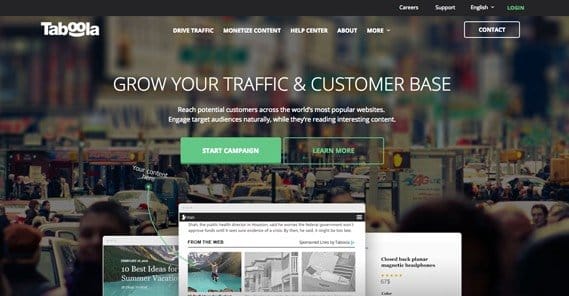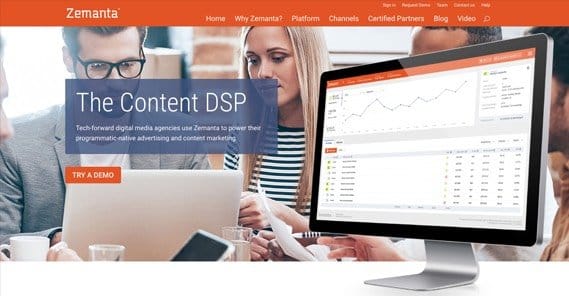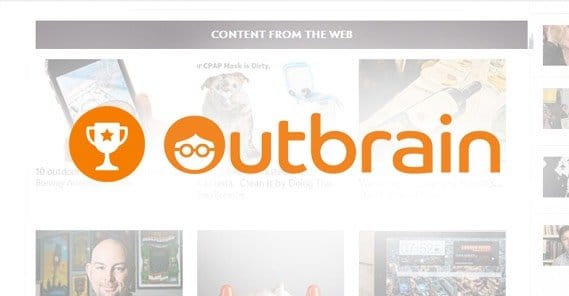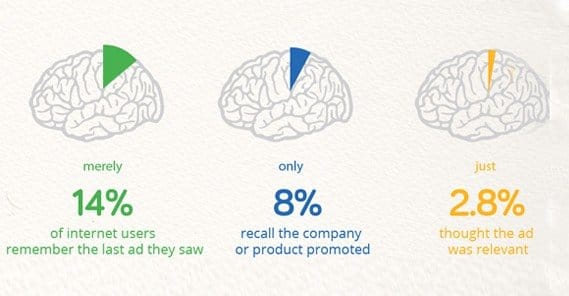Outbrain, Taboola, and Zemanta: Which Converts Best?
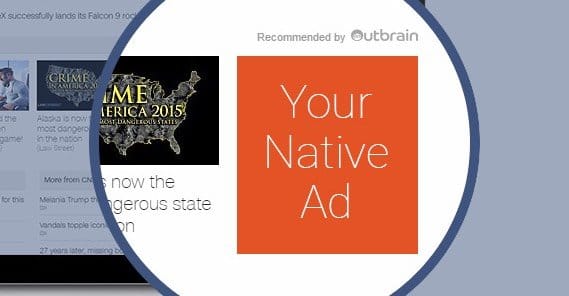
Outbrain, Taboola, and Zemanta are three advertising networks that have taken a relatively new business model and run with it. I guarantee you’ve seen them before, but you may not recognize it if you have.
See, just about every website these days has an in-site content discovery engine running. Generally for a WordPress site this is something like Yet Another Related Posts Plugin, something that creates boxes in a sidebar, mid-content, or beneath content. These boxes are filled via a script each page load. They contain a selection of other posts on your site, showing the headline and thumbnail of each post in an attempt to get people to stay on the site and browse from post to post. After all, the longer people spend on the site, the more likely they are to become interested in one of your calls to action, and the more likely they are to become a subscriber or customer.
There is a relatively new form of advertising called Native Advertising, which takes the “related posts” box and makes those links go to other sites. The look like they would be content on your site, but when the user clicks through, they find themselves on the content they intended to reach, on a different domain.
There are pros and cons for each of the platforms, so let’s take a look at them.
Outbrain
Outbrain is one of the older native advertising platforms and as such has a pretty large share of the market. They’re used by a lot of large brands, including Visa, McDonalds, and Shelter. They work with businesses both large and small, though they do want you to have about 10 million monthly pageviews for their top-tier offerings as a publisher. As an advertiser, you simply need to be able to pay them.
On a technical level, they do ban certain types of content. They don’t allow: alcohol advertising, adult content, financial services, gambling and gaming, contests and sweepstakes, health services, subscription-only services, weapons, illegal drugs, tobacco, supplements, and the usual suite of malicious content like hate speech, scams, and malware.
Outbrain only offers one form of advertising, which is native PPC on their network of large publishers. With the steep requirements for publishers, advertisers are guaranteed to get a high level of exposure, but it also means a high amount of competition, and it means certain ads will be rejected because they don’t fit with the publisher network. The average cost per click is going to be around 25-35 cents.
On the plus side, Outbrain has done a lot to cut out publishers and advertisers who aren’t up to par. Spam sites, small affiliate microsites, and clickbait sites with no value are generally cut out and banned, which increases the quality of the service overall.
The largest downside of Outbrain is that there aren’t really targeting options beyond broad niche and your budget. You don’t have anything anywhere near what you get out of something like AdWords or Facebook ads.
Taboola
Taboola is only a year younger than Outbrain, and as such has been one of their primary competitors for nearly a decade. They work on a very similar model, and are often the focus of direct one to one comparisons because of how similar they are.
Taboola is much easier to get into as a publisher, with their traffic requirements floating at half a million monthly pageviews, as compared to the dramatically higher level of Outbrain. This opens them up to much smaller sites, though “small” is still relative; 500,000 monthly views is still something like 17,000 views per day, which is certainly not small change.
Taboola is also a lot more open to other forms of content. They still ban anything that is infringing on a copyright, anything deceptive or malicious, anything illegal or hateful, and anything involving nudity or pornography. They also reserve the right to determine a piece of content or a site is objectionable to their administration and can remove it, though they don’t often exercise this power. They ban adult dating sites, weapons, illegal drugs, male enhancement, “PC repair” services, tobacco, and penny stocks.
Taboola does allow alcohol, attorney referrals, e-cigs and vapes, gambling, payday loans, political content, divination, forex, self improvement, software, subscription services, contests, weight loss, and supplements, as well as some other generally prohibited content. However, these are all on their restricted list. This means they will give extra scrutiny to your sites and make sure they’re okay with what you’re doing. The scammier or the less upright the site looks, the more likely they are to reject it. Think of it like Facebook and how you can advertise dating sites on Facebook, but only with prior express approval.
Taboola also suffers from the same sort of drawbacks as Outbrain, in terms of targeting options. They have their own focused content discovery engine they add your advertising to, and they don’t give you the option to really customize your appearance within it.
The cost per click on Taboola is going to range about 25-35 cents, just like Outbrain, but with the caveat that they have a special section for advertising specifically in their top 30 sites, and when doing so, the CPC is correspondingly higher; around 75 cents. Ideally, this will provide you much better traffic, but it depends entirely on your site and your content.
Taboola is also a slightly spammier looking native ad system. This results in lower clicks than you might expect given the size of the sites the ads run on, as well as a higher bounce rate.
Zemanta
Zemanta is a somewhat smaller and less prolific alternative to the two networks above. They’re just as old, but they have flown more under the radar, earning less of a reputation. This is good if you don’t have the traffic necessary to be a publisher on the other sites, but this isn’t a post about being a publisher.
Advertisers with Zemanta face many of the same restrictions on content as they do on Outbrain. They block illegal content, phishing, spam, pornography, violence, weapons, illegal drugs, tobacco, gambling, religious content, supplements, lawsuits, high risk investments, hate speech, and the other malicious content restrictions. They also will do occasional scans looking for copied content, clickbait, and exploitation of accidental clicks. Any of these gray and black hat techniques can remove you from their program.
Zemanta tends to charge on a pay per view model, as opposed to a pay per click model, and they have a minimum ad spend of $500. It’s also not cheap individually; experiments run a few years ago indicate that the cost of a display link that sticks around for any reasonable length of time is anywhere from $60 to $120.
Zemanta is probably the worst of the three networks on this list, which should come as no surprise. They have lower entry requirements for publishers, meaning your links show up on worse sites with less traffic. They have fewer restrictions on the quality of the ads shown through their network, so better quality sites don’t want to run them when they can run Outbrain instead. It all works out to be a generally lower exposure level for more money, with lower quality visitors at the end of it all.
Winner: Outbrain
Zemanta, as I just mentioned, is probably solidly rank three amongst these three. The trouble is, it’s also the only one many users are going to qualify to use. If you’re only able to use one of the three, obviously that one is going to be better than nothing at all.
Of the other two, Taboola comes in second, for many of the same reasons. They’re more open, they look a little spammier, and you’re generally going to be published on lower quality sites. However, it’s easier to get into than Outbrain, with a lower minimum spend. You get less traffic out of it, and lower conversion rates because the quality of that traffic is going to be lower, but it’s a perfectly serviceable network.
However, this equation changes when you factor in Taboola’s Top 30 network advantage. If you’re paying a premium to only appear in their top 30 network, chances are very good you’re going to outperform Outbrain on everything except volume. Outbrain still has that covered, simply by virtue of only accepting sites with massive amounts of traffic.
Outbrain will get you tons of traffic, but the conversion rate is going to be somewhat questionable. It’s interesting; you get more traffic, at a lower conversion rate than Taboola, but the traffic you do get and retain is going to have a higher conversion rate. It’s up to your site and your budget, however, to determine if this balances out to be a lower cost per conversion or not.
The Problem with Native Advertising
There are a few big problems with native advertising that you’re likely to encounter if you use any of the various native ad networks, be it the three mentioned above or anything else, like AdBlade or nRelate.
The first problem is that native advertising, as it becomes more common, becomes less effective. Native ads worked in the early days because no one anticipated them. They figured any related posts box is going to have actual related content, either on your own site or on a site in your content networks or blogroll. Native ads now aren’t necessarily even all that related. The topic might not match, and the only way a non-matching piece of content is related is if it’s on the same site, which it isn’t.
As with any form of advertising, the more exposure people get to it, the less effective it is. AdWords are countered by people not caring about AdWords. Banners are subject to banner blindness. Native advertising is not only declining in attractiveness and attention itself, but it’s gradually hurting actual on-site related post widgets. Many adblockers don’t even make a distinction anymore.
The second problem is that native advertising is a minor betrayal of expectations. When a user clicks a “related post” they expect to be sent to another article on the same site. When they aren’t, it’s a low-level disconnect between expectation and reality. The first reaction many people have is to immediately close the tab, because they assume it’s a redirected link or a scam of some kind. Now, Outbrain is subject to this a little less than other networks, because of their enforced high quality levels. Other networks don’t get the same attention. Even then, the betrayal is still there, so bounce rates are high and are only going to grow over time.
Unfortunately, the best form of native advertising is a direct one on one relationship with a network of sites you build yourself. By talking to and paying these people directly, you can get organic-looking recommendations and links rather than script-driven, ad-blocked related posts that have worse metrics. However, you lose all convenience of traffic tracking, multi-site exposure, and a quick and easy dashboard.
Now, the original question of this entire article revolves around the conversion rates of the three networks listed above. I can’t give you specific numbers, partially because I don’t have them all active for sites I own, and partially because their performance will be dramatically different between pieces of content, let alone across networks.
Clickbait-style content with provocative images and headlines are going to get you more clicks, though Outbrain is likely to filter them if they spot them. However, that kind of content is always going to be bad with conversions and bounce rate metrics. You aren’t doing yourself any favors catering to the kinds of impulsive people who love clickbait, because those people generally don’t convert. Even the kind of clickbait, sites like Buzzfeed and Upworthy, have spent a lot of time and energy diversifying away from a reliance on pure clickbait.
At the end of the day, you simply have to use the networks yourself and see how they perform. Outbrain is your go-to if you can afford it, but if not, at least steer clear of Zemanta; they probably just aren’t worth it.

 ContentPowered.com
ContentPowered.com

